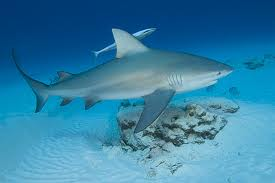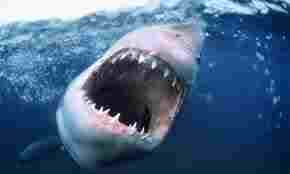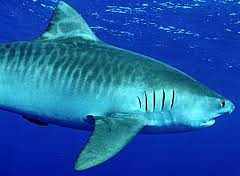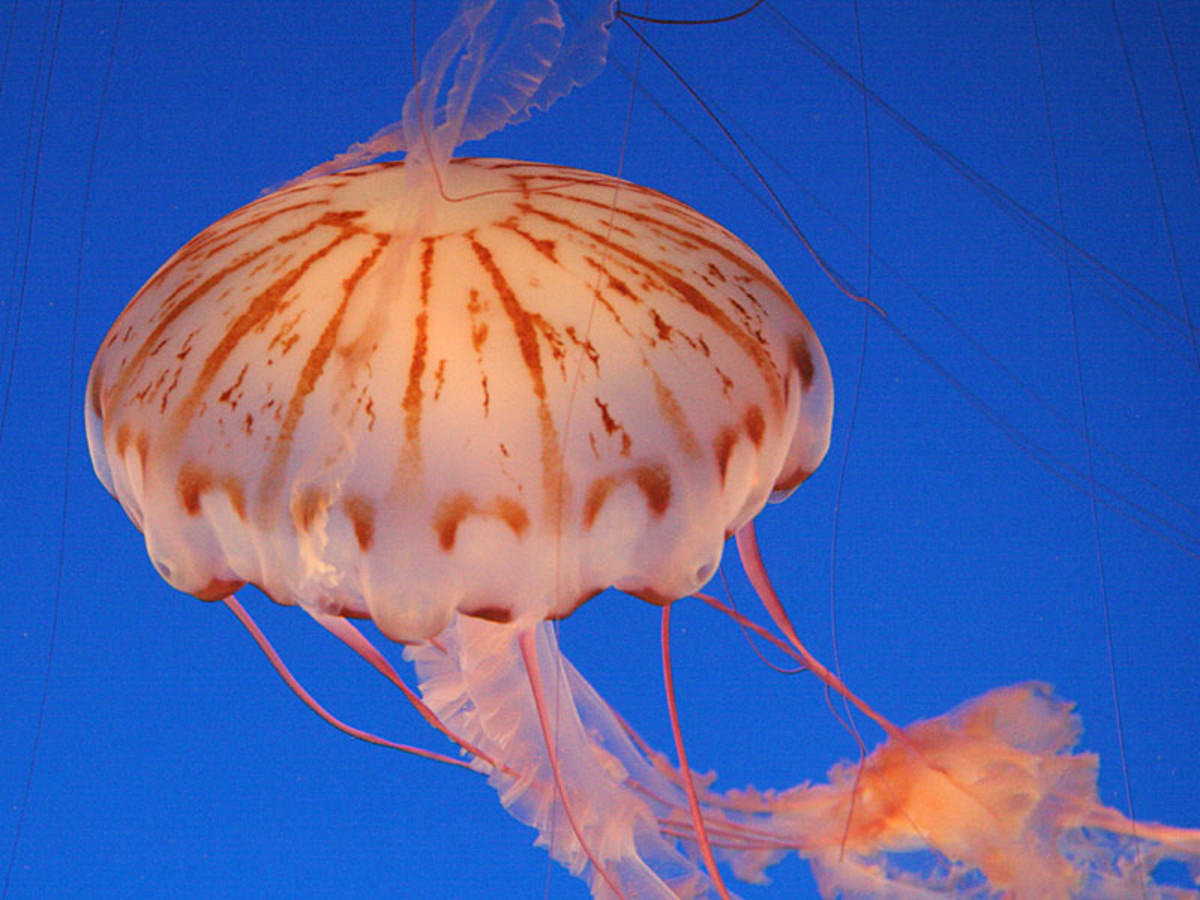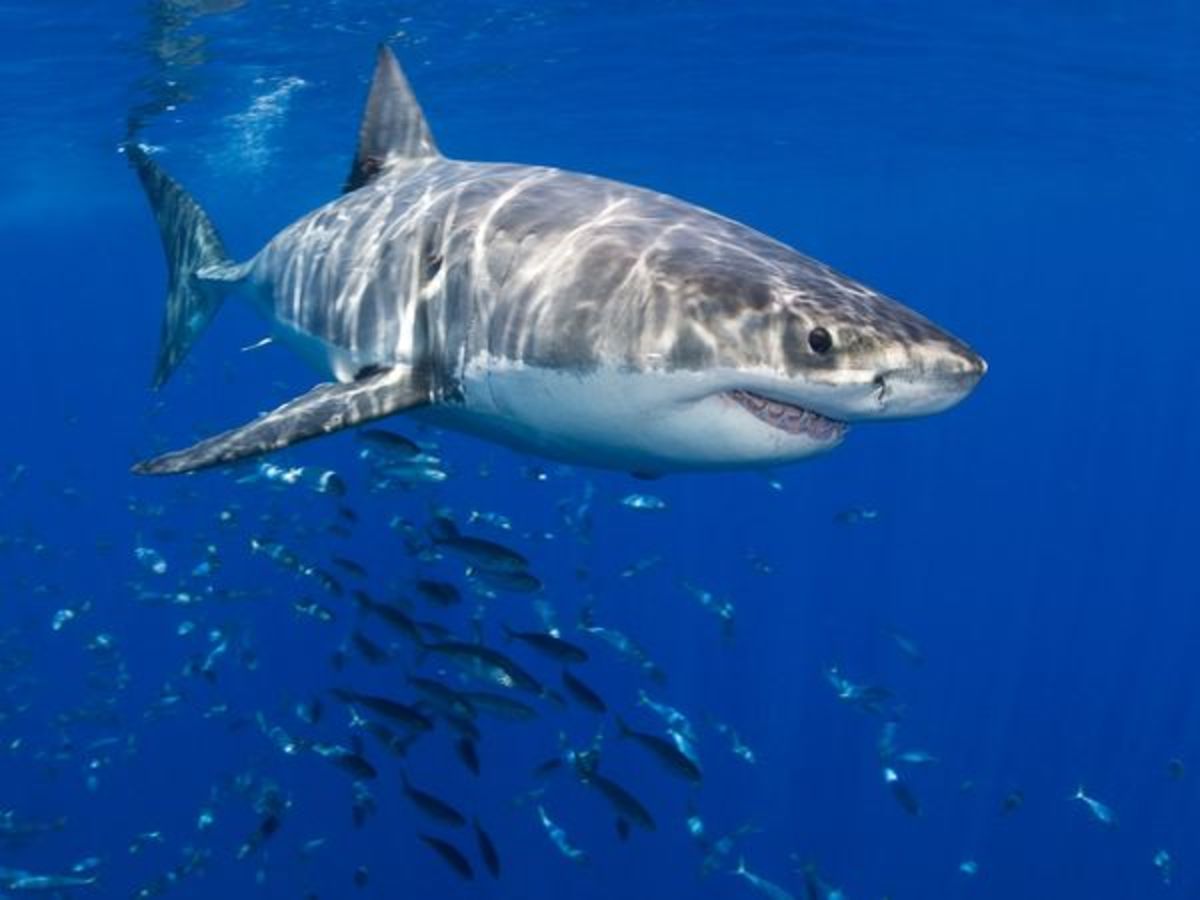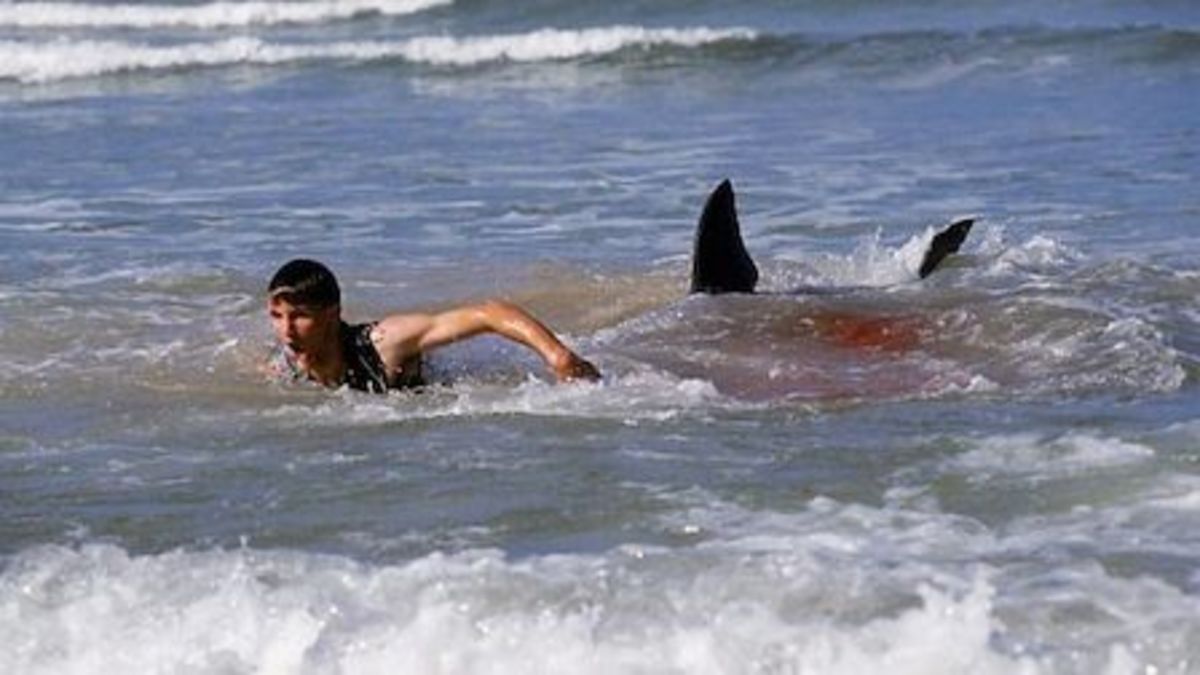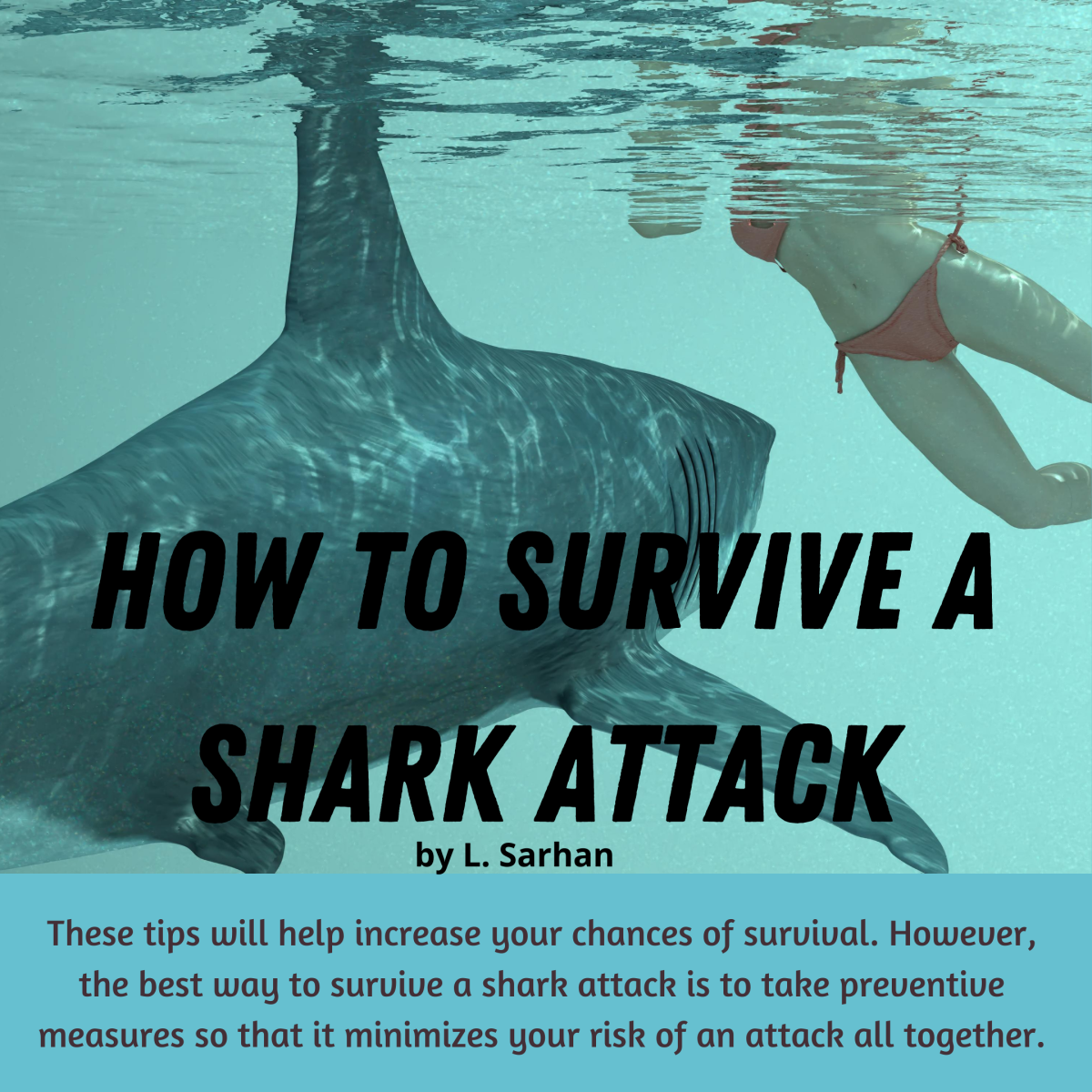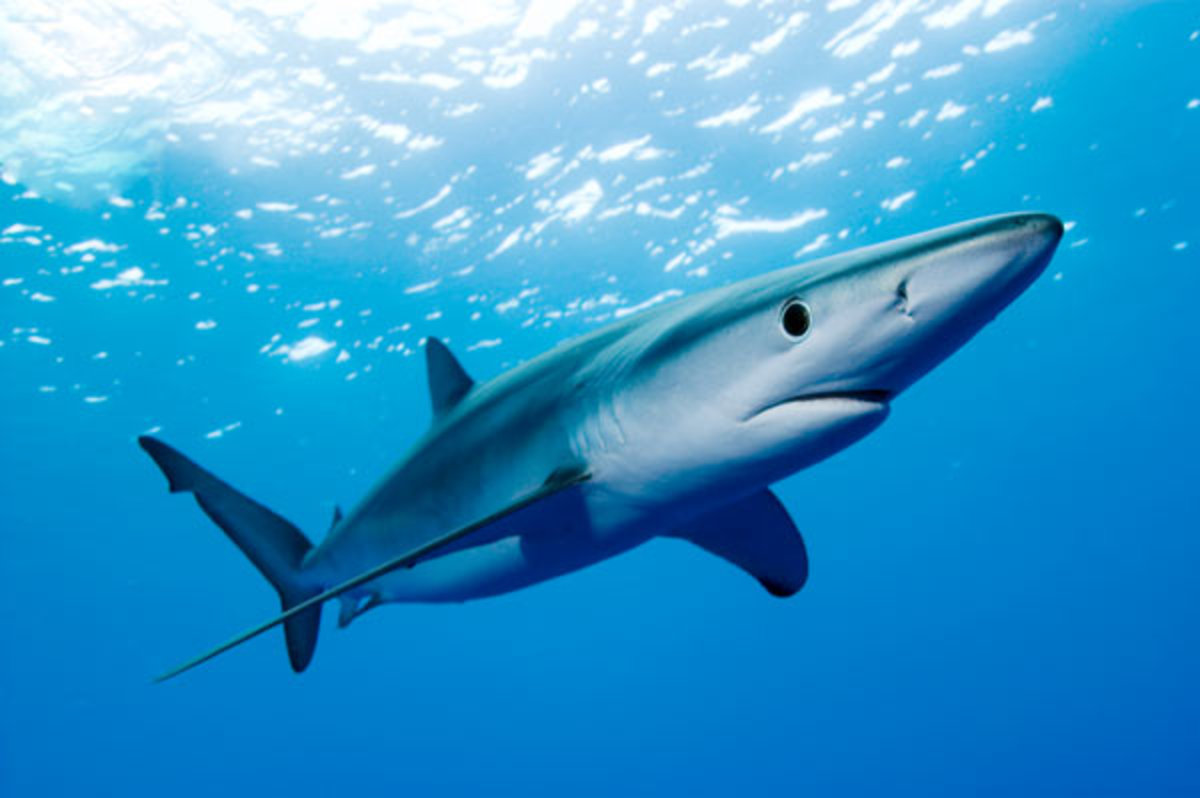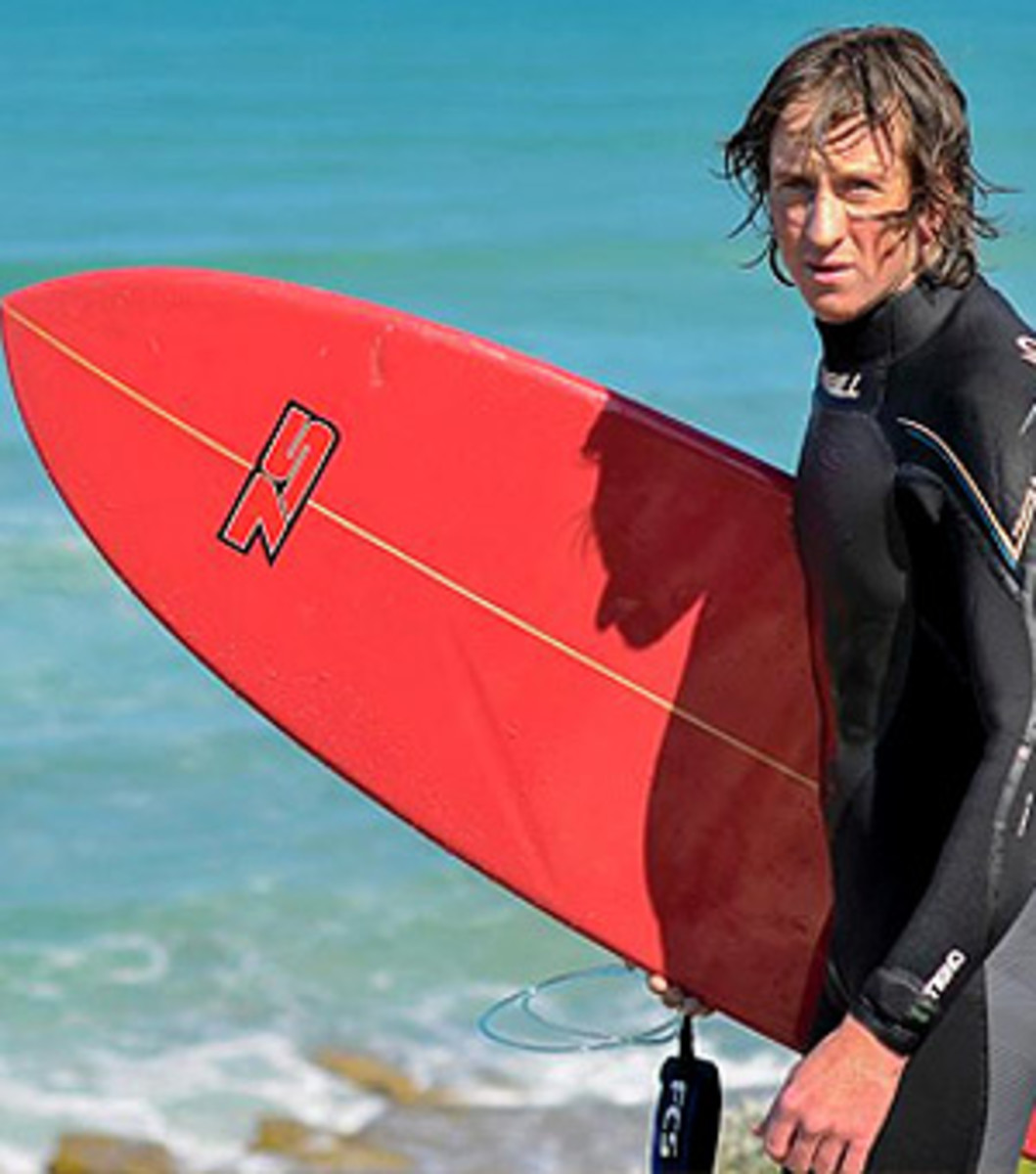- HubPages»
- Education and Science»
- Life Sciences»
- Marine Biology»
- Marine Life
The Seychelles Shark Attack...Sharks 1, Man, 60-Million! The One-Sided Truth of Shark v. Man Attack
The Four Considered the Most Deadly Maneaters
Click thumbnail to view full-size



Sharks, 60; Man, 60-Million!!
We all saw reports of the bather taken off a beach in the Seychelles this week, another of the few shark attacks that occur every year around the world.
It was a tragic incident, no doubt about it, and exacerbated by the fact the victim was the husband of honeymooners and the wife stood on the beach, screaming, as she witnessed her mate dying in agony and being partially devoured.
Now the officials in the Seychelles, with an eye to the island's tourism figures as much to seeking “justice” for the victim's family, have instituted a shark hunt. They have said they will "locate the shark responsible, no matter what the cost!" They meant the cost to them, no doubt, but the sharks will really be footing the bill as many innocent creatures will no doubt suffer.
We saw some aerial photos of a truly huge Bull-Shark in waters near the incidents (a French swimmer was also taken a month previously at the same location). He (the shark) was trailed by about a dozen large Remora fish, which shadow sharks, partaking of bits of their blood meals. Bull sharks, some of the leading man-eaters, have been recorded attacking swimmers, especially in salt-water estuaries.
Although there has been the occasional, non-fatal attack by sharks not normally known as man-eaters, the four species carrying most of the burden of human death and disfigurement are the Great White, Tiger Shark, Bull Shark, and the lesser known, the Oceanic Whitetip. (With Hammerheads and Makos, etc., on the cautionary list).
The last on the list, the Whitetip, receives less publicity, but is by far the most deadly if statistics of death are considered. It is the deep ocean monster that has been seen, time and time again, attacking passengers after shipping disasters. It gets its name from the white tip of its dorsal and other fins as well as tips on the tail fin.
The Great White, also called the "White Death," is the shark which has received the most publicity, which it may not have entirely deserved. Peter Benchley, the author of the book, "Jaws," which led to the horror (and nonsense) picture of the same name, spent the last years of his life trying to undo some of the harm he has caused to these stunning creatures. One of the worst features of this - and other - films of sharks and other predators is the producers anthropomorphising of the unwitting creatures and ascribing mindless violence, planning, cunning, revenge and other characteristics to them which really only belong to one creature, and you all know who that is!
The truth is that sharks are in no way "mindless killers" as they have been portrayed, but in the main frightened of man and disinterested in eating man's polluted flesh, except in rare circumstances. This is why there are only about 60 reported attacks per year, world-wide, a small proportion of which are fatal. (In the year 2000, for example, there were only 79 attacks with 11 fatalities...and that was the worst year in modern history!) Of course, many attacks go unrecorded in waters off Africa, South American and other oceanic areas "off the media map." This has been found to be true of crocodile attack, too, where many are killed every year in the African watersheds, and go unreported except to journalists visiting the area.
It must be true that more primitive people (by our yardsticks) expect to suffer loss of life in the environment they share with wild predators, many of which they kill all the time for their own (or Chinese!) interests.
I say this about China, because man is killing SIXTY MILLION SHARKS PER YEAR. I think that's worth emphasising. A HUGE percentage of which go to Asia to satisfy the insatiable demand for shark-fin soup and other delicacies from the organs of sharks.
Most shark attacks HAVE, in fact, occured in North American waters, off the coasts of Florida, Hawaii, the Gulf Coast and the South West. This followed by Australia and South America (the last a great operating ground for Great Whites). Australia has a LOT of sharks, especially tigers, and only its great safety record keeps its attack stats. down. People are very shark conscious there, but they don’t let it interfere with their national obsession with surfing and other water sports and pastimes. All large swimming and surfing beaches, such as Bondi and Manly, etc.,in NSW, have life-guards with top warning and rescue equipment, including surf boats which can be launched for the beach in any conditions. At the weekends, they have spotter aircraft patrolling up and down the beaches and seas. If a large shark is spotted, sirens are sounded and people get out of the water (I saw many surfers on boards ignoring the warnings...not me, I was still running when I hit the promenade!).
Other, harbour-side beaches have shark nets. No one swims at night in the Sydney harbour and dogs are not allowed in the water in this area. (Sharks do take dogs frequently, probably because they splash around and attract the predator’s attention).
Another statistic for you: In more than 300 years of reporting shark attacks in the USA. there has only been just over 1000 attacks. Would you like to take a guess of the number of sharks suffering “man-attack” during that period? Go for it, then, it will run into the billions, world-wide.
Man needs to take as many sensible precautions as possible when swimming in the sea: the chances of being bitten by a shark are less than being hit by lightning in any given year!
But these amazing creatures which have been on the planet millions of years longer than we have - or ever will, I am sure, are the victims which really need protection from man.
Not enough study has been done about shark attack; man-eaters and the victims themselves: were they bleeding, menstruating; how were they behaving at the time of the attack? And just how is over- fishing affecting the shark and its natural prey. How old was the shark at the time of the attack: was it, like many ageing land predators such as the lion, just incapable of catching its normal prey?
Notes on Seychelles Attack.
There is little doubt that this was about as horrifying as any attack of a large predator on man can be. The victim had gone snorkelling to see turtles which congregate at areas of the beach. It may be noted that large sharks also predate on turtles. His cries were heard by two French yachtsmen who bravely launched a flimsy dinghy and pulled him into it. One of the rescuers was a surgeon and he said he was shocked at the amount of blood in the water and the horrific wounds.
He said “He had virtually been eaten, with one arm missing and all the muscle and flesh torn from one thigh.”
There was a hospital fairly near, but the ambulance took 30 minutes to arrive and by then he had lost too much blood.
There was a sad moment where his wife was able to hold his hand and say goodbye. She said “I saw the resignation in his eyes.”
Two things which may be noted and is no doubt being bandied-around by the shark-hunters and experts summoned by worried Seychelles officials. One is that is was a very big shark as determined by bite marks and the ferocity of the attack. It was also a shark after a meal, not one defending itself from an intruder in its domain. This also might indicate its familiarity with human meat.
I am sure there will be a huge law suit held against the irresponsible Seychelles tourist facility officers who did not advise tourists of the first fatal attack one month previously. And, apparently, it is coming to light they issued a gag-order on guides and other staff not to mention the incident or the fact that there had, indeed, been more attacks over the years that were not reported.
The one blameless creature in all this is the shark. We were intruding in his waters and he was only doing what sharks do every day, getting his dinner.
There is a lot to be answered before you go off in a mindless shark hunt again, Seychelles’ fishermen, like that which f
There is a lot to be answered before you go off in a mindless shark hunt again, Seychelle‘s fishermen, like that which followed Jaws!

